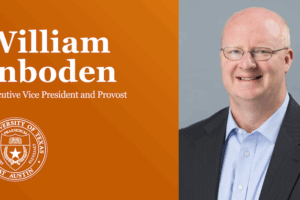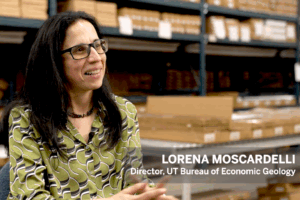The Wren-Marcario Accessible Telescope (WMAT), designed to be wheelchair accessible for mobility-impaired visitors to The University of Texas at Austin McDonald Observatory, will be dedicated tomorrow at the Frank N. Bash Visitors Center.
It will provide sharp views of the Moon, planets and deep-sky objects for visitors under the darkest night skies of any professional observatory in the continental United States.
Situated behind the Frank N. Bash Visitors Center, the telescope sits on a concrete pad and is surrounded by wide wheelchair paths. It is part of the Rebecca Gale Telescope Park used for the Observatory’s popular star parties held every Tuesday, Friday and Saturday night throughout the year. The telescope will be used by non-impaired guests as well.
Based on a design by physicist August Pfund, the telescope’s two 18-inch (0.46 m) primary mirrors are aligned north-south, with a steering flat mirror centered between, them to allow easy access to the entire sky. The small movable portion of the design allows the telescope to move rapidly from one target to the next, while the eyepiece stays fixed. This high-speed pointing system will allow mobility-impaired visitors a much greater level of participation in star parties than previously possible.
The telescope was built by the Las Cumbres Observatory Global Telescope Network (LCOGT) in Santa Barbara, Calif. LCOGT is a private foundation building a global network of telescopes for scientific research and research-based education. LCOGT President Wayne Rosing was the engineer behind the WMAT project. Long-time McDonald Observatory volunteer Mike Jones, an optical engineer with Lockheed Martin, designed the telescope’s optics. Bill Wren donated several parts from the Wren Supernova Search Telescope for use on WMAT.
WMAT is named in honor of Bill Wren’s father, George B. Wren II (1917-1993) and Mike Marcario (1954-1998). Marcario was a McDonald night assistant during the mid-1990s, an optician who fabricated a key optical element for the Marcario Low-Resolution Spectrograph on the Hobby-Eberly Telescope, and friend of the Observatory. WMAT was made possible by donations from Wayne Rosing and Dorothy Largay, Mike and Shirley Marcario, Mike I. and Dee Jones, Bill and Becky Wren, and anonymous donors.
Established in 1932, The University of Texas at Austin McDonald Observatory near Fort Davis, Texas, hosts multiple telescopes undertaking a wide range of astronomical research under the darkest night skies of any professional observatory in the continental United States. McDonald is home to the consortium-run Hobby-Eberly Telescope, one of the world’s largest, which will soon be upgraded to begin the HET Dark Energy Experiment. An internationally known leader in astronomy education and outreach, McDonald Observatory is also pioneering the next generation of astronomical research as a founding partner of the Giant Magellan Telescope.
Note to editors: A two-minute video, high-resolution photos and an illustration to accompany this release are available. The video is also available at McDonald Observatory’s YouTube channel.



